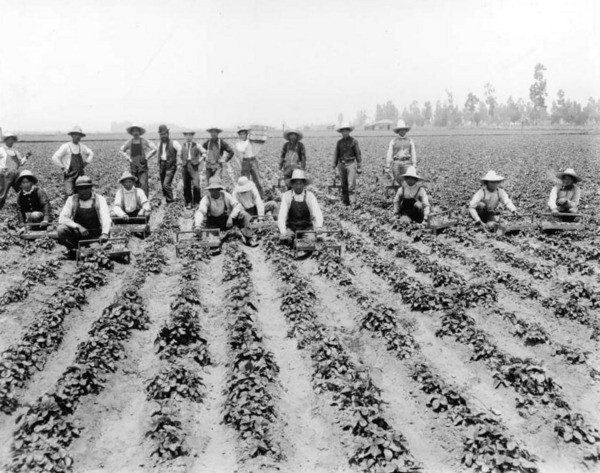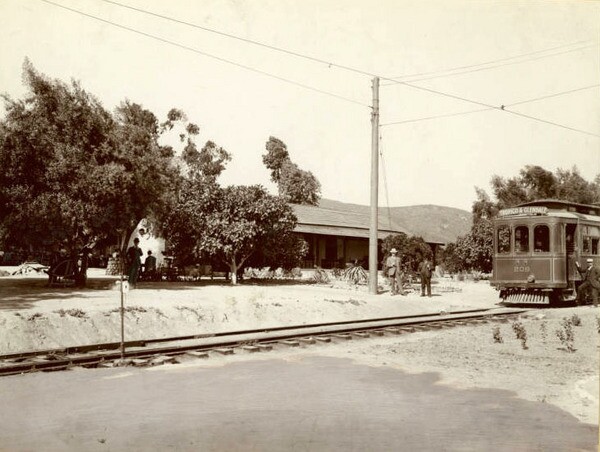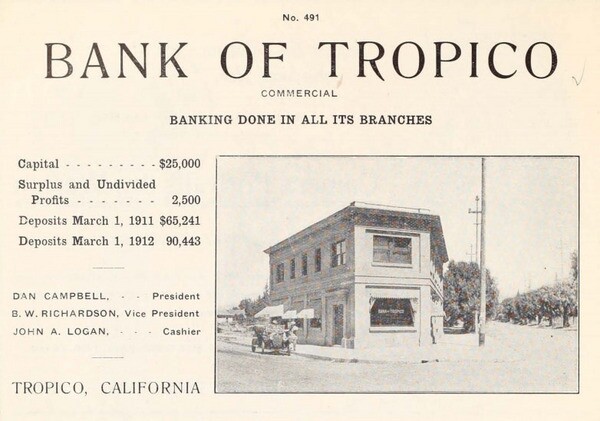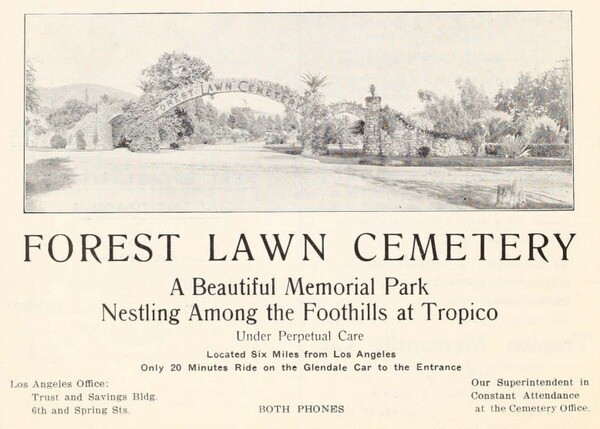The Lost City of Tropico, California
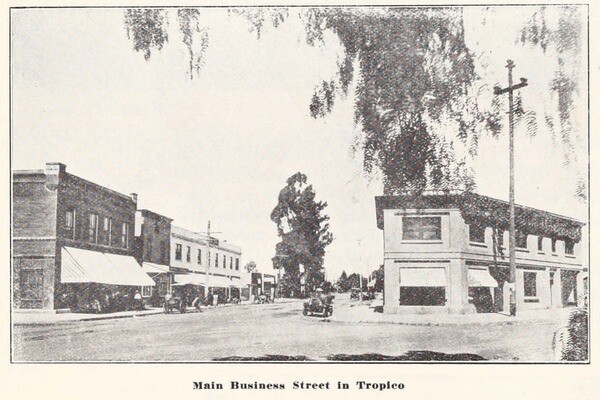
A post office may still bear the name, but don't try addressing a letter to "Tropico, CA" – the city of Tropico dissolved 96 years ago.
The name first appeared on maps in November 1887, when the Southern Pacific applied it to its depot in the fertile farming valley just north of Los Angeles. The name's origins are unclear, but it certainly agreed with the railroad's promotional claims about Southern California's warm climate. Oddly, when rancher W. C. B. Richardson and his business partners platted a town near the rail station in late 1887, they gave two other names to the collection of buildings, "Ethelden" and then "Mason," before realizing that "Tropico" might suit the settlement best.
Like the rival town of Glendale to the north – also established during the boom years of 1886-88 – Tropico remained a small agricultural town for its first decade, famous for its produce and especially its strawberries, sold as "Tropico Beauties." But the settlement eventually matured into a diversified town with residential tracts, light industry, and a commercial downtown centered around the intersection of San Fernando Road and Central Avenue. An interurban trolley line reached Tropico in 1904, the same year a major employer, Tropico Art Tile Works, opened. It also soon became home to influential photographer Edward Weston.
By 1911, the neighboring cities of Glendale and Los Angeles were eyeing prosperous Tropico. The question of annexation bitterly divided the town; many wanted to incorporate as an independent city, but others favored a merger with Glendale, which had incorporated in 1906, and a few preferred to join with Los Angeles. Through slick political maneuvering, the anti-annexationists prevailed, and Tropico became an independent municipality on March 17, 1911. Within a few years, the newborn city boasted a population of 3,000, its own bank, ten miles of paved streets, 22 miles of cement sidewalks, and a two-story city hall. But it also struggled with basic infrastructure like sewers, water delivery, and electricity, and so residents soon reconsidered the wisdom of independence.
In 1917, Tropico voted 2,110 to 650 in favor of consolidating with Glendale, and on January 9, 1918, the city ceased to exist. For a time, the names of businesses and civic installations carried on the memory of the erstwhile city, but today little evidence remains. The Glendale Public Library's Tropico branch closed in the 1980s, and the Southern Pacific's Tropico depot has become Metrolink's Glendale station. Aside from the Tropico Station post office, one of the few remnants is tiny Tropico Motel, whose tropical landscaping and palm-tree signage struggle to make sense of the now-unfamiliar name.

